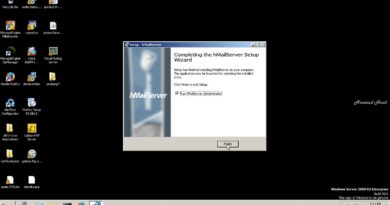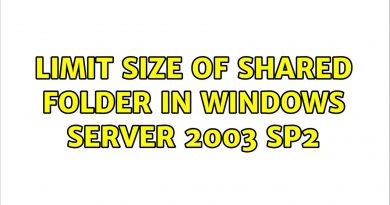CCNA 200-301 SYLLABUS || Classy Infotech
CCNA 200-301 SYLLABUS in Tamil
Syllabus Download Link: https://www.cisco.com/c/dam/en_us/training-events/le31/le46/cln/marketing/exam-topics/200-301-CCNA.pdf
Network Fundamentals,
Role and function of network components,
Routers,
L2 and L3 switches,
Next-generation firewalls and IPS,
Access points,
Controllers (Cisco DNA Center and WLC),
Endpoints,
Servers,
network topology architectures,
2 tier,3 tier,Spine-leaf
WAN,
Small office/home office (SOHO),
On-premises and cloud,
Compare physical interface and cabling types,
a Single-mode fiber, multimode fiber, copper,
Connections (Ethernet shared media and point-to-point),
Concepts of PoE,
Identify interface and cable issues (collisions, errors, mismatch duplex, and/or speed),
Compare TCP to UDP,
Configure and verify IPv4 addressing and subnetting,
Describe the need for private IPv4 addressing,
Configure and verify IPv6 addressing and prefix,
Compare IPv6 address types,
Global unicast,
Unique local,
Link local,
Anycast,
Multicast,
Modified EUI 64,
Verify IP parameters for Client OS (Windows, Mac OS, Linux),
Describe wireless principles 1.11.a Nonoverlapping Wi-Fi channels 1.11.b SSID 1.11.c RF 1.11.d Encryption,
Explain virtualization fundamentals (virtual machines),
Describe switching concepts,
MAC learning and aging,
Frame switching,
Frame flooding,
MAC address table,
2.0 Network Access,
Configure and verify VLANs (normal range) spanning multiple switches,
Access ports (data and voice),
Default VLAN,
Connectivity,
Configure and verify interswitch connectivity,
Trunk ports,
802.1Q,
Native VLAN,
Configure and verify Layer 2 discovery protocols (Cisco Discovery Protocol and LLDP),
Configure and verify (Layer 2/Layer 3) EtherChannel (LACP),
Describe the need for and basic operations of Rapid PVST+ Spanning Tree Protocol and identify basic operations,
Root port, root bridge (primary/secondary), and other port names,
Port states (forwarding/blocking),
PortFast benefits,
Compare Cisco Wireless Architectures and AP modes,
Describe physical infrastructure connections of WLAN components (AP, WLC, access/trunk ports, and LAG),
Describe AP and WLC management access connections (Telnet, SSH, HTTP, HTTPS, console, and TACACS+/RADIUS),
Configure the components of a wireless LAN access for client connectivity using GUI only such as WLAN creation, security settings, QoS profiles, and advanced WLAN settings,
IP Connectivity,
Interpret the components of routing table,
Routing protocol code,
Prefix,
Network mask,
Next hop,
Administrative distance,
Metric,
Gateway of last resort,
Determine how a router makes a forwarding decision by default
Longest match,
Administrative distance,
Routing protocol metric,
Configure and verify IPv4 and IPv6 static routing,
Default route,
Network route,
Host route,
Floating static,
Configure and verify single area OSPFv2,
Neighbor adjacencies,
Point-to-point,
Broadcast (DR/BDR selection),
Router ID,
Describe the purpose of first hop redundancy protocol,
IP Services,
Configure and verify inside source NAT using static and pools,
Configure and verify NTP operating in a client and server mode,
Explain the role of DHCP and DNS within the network,
Explain the function of SNMP in network operations,
Describe the use of syslog features including facilities and levels,
Configure and verify DHCP client and relay,
Explain the forwarding per-hop behavior (PHB) for QoS such as classification, marking, queuing, congestion, policing, shaping,
Configure network devices for remote access using SSH,
Describe the capabilities and function of TFTP/FTP in the network
Security Fundamentals,
Define key security concepts (threats, vulnerabilities, exploits, and mitigation techniques),
Describe security program elements (user awareness, training, and physical access control),
Configure device access control using local passwords,
Describe security password policies elements, such as management, complexity, and password alternatives (multifactor authentication, certificates, and biometrics),
Describe remote access and site-to-site VPNs,
Configure and verify access control lists,
Configure Layer 2 security (DHCP snooping, dynamic ARP inspection, and port security),
Differentiate authentication, authorization, and accounting concepts,
Describe wireless security protocols (WPA, WPA2, and WPA3),
Configure WLAN using WPA2 PSK using the GUI,
Automation and Programmability,
DISCLAIMER
This channel does not promote or encourage any illegal activities.
All contents provided by this channel for “GENERAL AND EDUCATIONAL PURPOSE”
“Copyright Disclaimer Under Section 107 of the Copyright Act 1976, allowance is made for “fair use” for purposes such as criticism, comment, news reporting, teaching, scholarship, and research. Fair use is a use permitted by copyright statute that might otherwise be infringing. Non-profit, educational or personal use tips the balance in favor of fair use.”
by Classy Infotech
linux dhcp server



